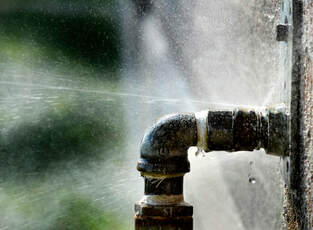6 Ways to Find Concealed Water Leaks in Your Residence
6 Ways to Find Concealed Water Leaks in Your Residence
Blog Article
This post listed below on the subject of Detecting hidden plumbing leaks is relatively remarkable. You should investigate for yourself.

Early discovery of dripping water lines can mitigate a prospective calamity. Besides conserving you cash, it will decrease the irritation and frustration. The minute you locate a leakage, calling your plumber for repairs is the most effective option. Some small water leaks may not be noticeable. If you can not identify it with your nude eyes, here are some hacks that aid.
1. Check Out the Water Meter
Every home has a water meter. Inspecting it is a guaranteed way that assists you uncover leakages. For starters, turn off all the water resources. Ensure nobody will purge, make use of the faucet, shower, run the cleaning machine or dishwasher. From there, most likely to the meter and watch if it will certainly alter. Since no person is using it, there ought to be no motions. That suggests a fast-moving leakage if it relocates. If you identify no modifications, wait an hour or 2 and also examine back again. This means you may have a sluggish leakage that might even be below ground.
2. Inspect Water Usage
If you spot abrupt modifications, regardless of your intake being the exact same, it indicates that you have leakages in your plumbing system. An abrupt spike in your expense indicates a fast-moving leakage.
On the other hand, a consistent rise every month, despite having the very same behaviors, reveals you have a slow leakage that's additionally slowly escalating. Call a plumber to extensively examine your residential property, specifically if you feel a cozy area on your floor with piping beneath.
3. Do a Food Coloring Test
When it comes to water intake, 30% comes from toilets. If the color in some way infiltrates your dish during that time without flushing, there's a leakage in between the container and also dish.
4. Asses Exterior Lines
Don't forget to examine your exterior water lines as well. Examination spigots by affixing a garden pipe. Needs to water permeate out of the link, you have a loosened rubber gasket. Replace this and make certain all links are limited. It will certainly aid obtain it properly examined and maintained annually if you've obtained a lawn sprinkler system. One little leak can throw away tons of water and surge your water bill.
5. Check and also Assess the Circumstance
Property owners need to make it a practice to examine under the sink counters and even inside cupboards for any bad odor or mold and mildew growth. These two red flags show a leak so timely interest is needed. Doing routine inspections, also bi-annually, can save you from a significant issue.
Check for stainings and damaging as a lot of pipelines and appliances have a life span. If you believe dripping water lines in your plumbing system, don't wait for it to intensify.
Early detection of dripping water lines can mitigate a possible calamity. Some little water leakages might not be visible. Inspecting it is a guaranteed method that assists you discover leaks. One tiny leak can waste lots of water as well as surge your water costs.
If you believe dripping water lines in your plumbing system, do not wait for it to intensify.
How to Know If Your Home Has a Hidden Leak
Water Meter Reveals Inexplicable Water Usage
If you’d like to test whether or not there’s a leak somewhere in your home, you can do this using your water meter. Here is how to conduct the test:
Don’t use any water in your home for at least 30 minutes; this also means not turning on faucets or water-using appliances.
Go outside, and check your water meter for activity.
If your water meter shows that there was activity, even though no one was using any water, this proves that there is a leak in your home.Visible Mold or Mildew Growth
Leaks behind walls create moist, dark environments that allow mold and mildew to grow and thrive. Eventually, you might see mold growth forming on the wall closest to a hidden leak.
If mold is growing in an area that receives a high amount of moisture, such as a bathroom, it may simply be an indication that better ventilation is needed. However, if you see mold growth on a wall or the ceiling in an area where you would not expect, you probably have a hidden leak.
Musty, Mildew Odor
Sometimes you might not be able to see the mold or mildew that is growing as a result of a leak. However, the smell can give the problem away just as easily. If you catch a whiff of something musty, there’s a good chance that old water is collecting somewhere in your home that you can’t see.
Stained/Warped Walls, Ceilings, or Floors
When your home soaks up water, a variety of red flags can become visible, including ceiling stains, bubbling drywall, warped walls, and sagging floors. While these issues can be caused by excess humidity, they can also be signs that a pipe or plumbing connection has started leaking behind your walls.
Inexplicably High Water Bill
After a while, you get a general sense for what your water bill should be. If you own a pool or sprinkler system, your bill will tend to be higher during summer. However, if you receive a water bill that seems especially high, and you can’t figure out what caused it, then you may have a hidden leak somewhere that’s increasing your bill.
https://www.plumbingjoint.com/blog/2019/july/how-to-know-if-your-home-has-a-hidden-leak/

Hopefully you enjoyed reading our topic on Locating water leaks. Thank you for taking the time to read our blog. Sharing is caring. One never knows, you will be helping someone out. We recognize the value of reading our article about Leaking water lines.
Report this page